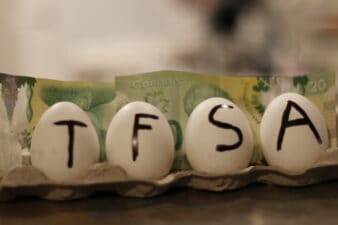No investment and retirement saving strategy is flawless. It’s very easy to say “the more, the merrier” (i.e., the more you can save, the better funded your retirement will be). But when it comes down to brass tacks, there are a significant number of things that can go wrong. Two variables — your investment assets and asset allocation — alone can influence your retirement finances more than the amount you are able to save.
And that’s just one area of your retirement strategy. How your retirement savings reconcile with your fixed government and (if you are lucky) employer pension is also an important consideration.
The OAS clawback
Your OAS and CPP pensions are the most predictable element of your retirement income, and you have some control over them as well. If you can defer taking your OAS and CPP pensions, you can maximize the amount you can get, which can be a good thing,1 because this pension stays with you even when (and if) all your savings and investments are depleted.
They are taxable, but they are not the only taxable income you can get. Most people get their RRSP converted into an RRIF, which results in mandatory withdrawals. And if you have a very well-funded RRIF, your mandatory withdrawals might force you to push through the OAS clawback income limit.
The OAS clawback will start from the net world income of $77,580 for 2021. If you are earning more than that through the combination of your RRIF mandatory withdrawals and your taxable pension income, you will need to pay part of it back to the CRA.
The TFSA route
If you are earning less from the same combination, but you need a heftier amount to meet your retirement expenses, you have two routes: withdraw more from your RRIF or lean on your TFSA. The latter would be tax-free income, so it won’t upset your taxable income balance, and you might not be subjected to the 15% OAS clawback.
Inside your TFSA, you can generate an income in two ways: either through selling stocks and reaping capital gains or from dividends. A dividend income, especially if it comes from safe and relatively reliable Dividend Aristocrats like Exchange Income Fund (TSX:EIF), can be the safer alternative. Despite its dependence on the airline business, the company has shown amazing resilience. The stock is still trading on a 17% discount, but that’s beneficial from a yield perspective.
It’s currently offering a decent 6.18% yield, and if you can divert $50,000 from two fully-stocked TFSAs (as a couple) into this stock (or a diversified portfolio that offers the same yield), you would get about $515 a month. In a year, this gives you a wiggle room of $6,180. That’s the amount a retired couple can get from a fixed (and hopefully growing) dividend income without stepping over the clawback limit for the year.
Foolish takeaway
Asset allocation is just as important as asset selection, especially when you have to consider the tax implication. The ideal situation is when you are maxing out both your RRSP and TFSA, but if you have a limited amount, you have to be more discerning about asset allocation. Since a TFSA is more flexible, you might prioritize filling that up to the brim first.







